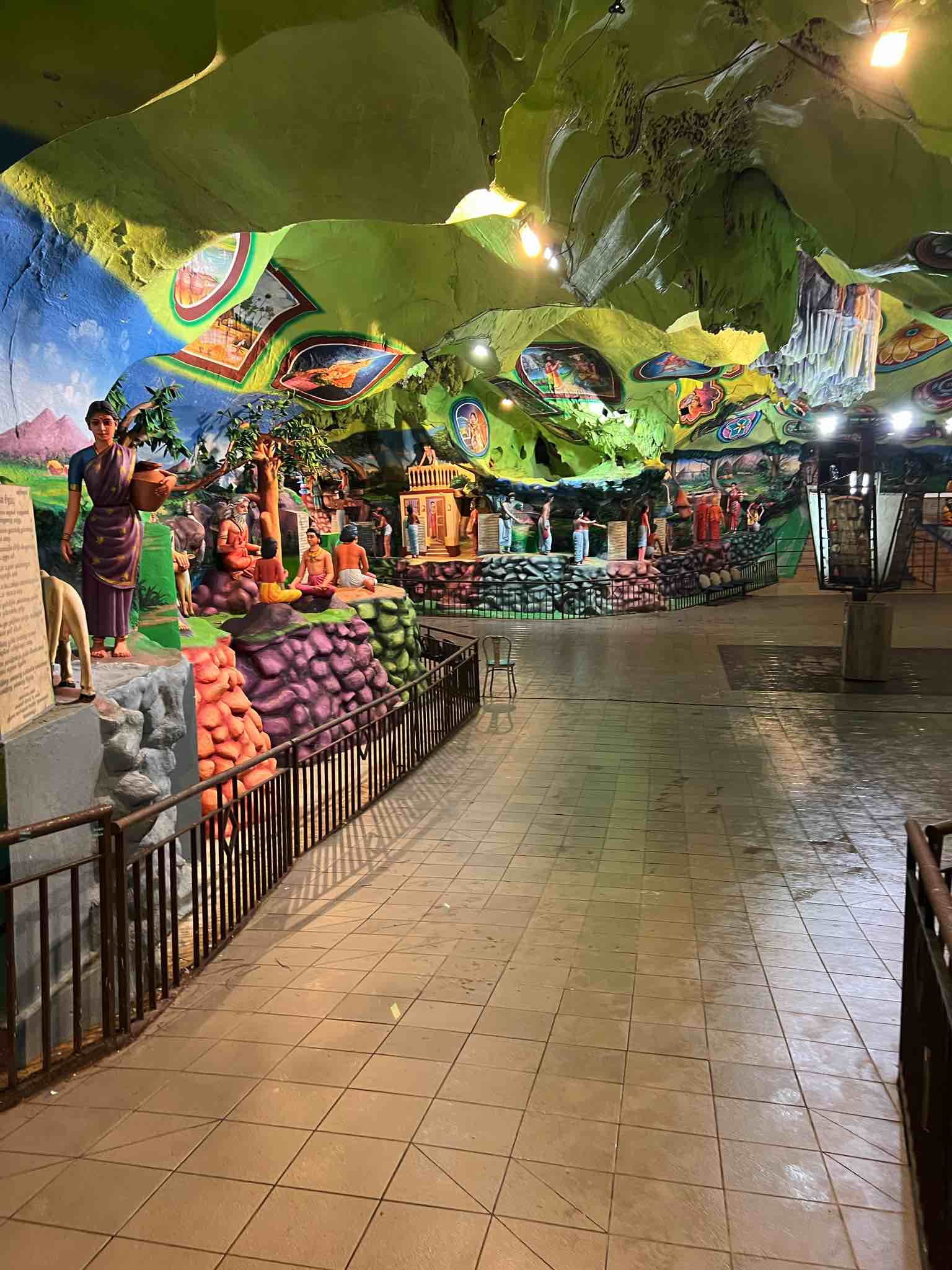Batu Caves, the sacred wonders in Kuala Lumpur
Hello Folks!
I have just returned from a three-week tour across the Europe and I must admit that I was very lucky because the weather was wonderful, sunny, 22 °, both in Lithuania and Sweden. In Poland, it is of course the most beautiful time of the year. The rainy season is in full swing in Viet Nam. This involves daily rain and strong tropical storms. It's a pity that you can't send this rainfall to Europe. Plants need a lot…
However, just before leaving for Europe, I had the opportunity to visit Kuala Lumpur. Like the trip to China, this is the first visit after about four years.
You can read about how to get to Kuala Lumpur and where to stay in the previous articles, which I link here: Part 1 and Part 2. In the next article you can take a walk around the city center.
Currently, entering Malaysia is completely hassle-free and, of course, it is visa-free for us.
There are also no covid restrictions. However, it is recommended to use masks in public transport and sometimes it is required.
Unlike China, all the places I know, especially those iconic for Kuala Lumpur like Petaling Jaya, the Chinese street with fakes or the park by the Petronas Tower, are functioning. The malls, restaurants and stores I used to know are still operating.
Probably the location of Malaysia, which manages the Strait of Malacca, where all container transport from East Asia, mainly from China but also from Korea, flows to the Indian Ocean and then through the Suez Canal to Europe, helped to supply the budget with transit revenues. Oil production, which is quite large in the area of the Malaysian shelf, also gives the country a steady income. These, in my opinion, were the main factors that kept the Malaysian economy in good shape. The local currency, ryngit, is still worth PLN 1.
You probably remember from previous articles that Malaysia is a country with many faces. Suffice it to say that three different nationalities, religions and cultures coexist. This mix fascinates me all the time. When I visit Malaysia, it's a nice touch that both Buddhists, who are mostly Chinese, Malays, who are Muslims, and Indians, live in really good interpersonal relationships. Envy.
The history of my visits to Malaysia shows that practically every other week a holiday related to one of these societies is celebrated. Regardless of when you go to Malaysia, you will come across a festival of one of the three cultures. And everyone is free. When are they working?
And it is the mix of cultures that is the reason why I would like to ventilate you a bit today, i.e. take you from the center of Kuala Lumpur to the outskirts of the city, to the Gombak district.
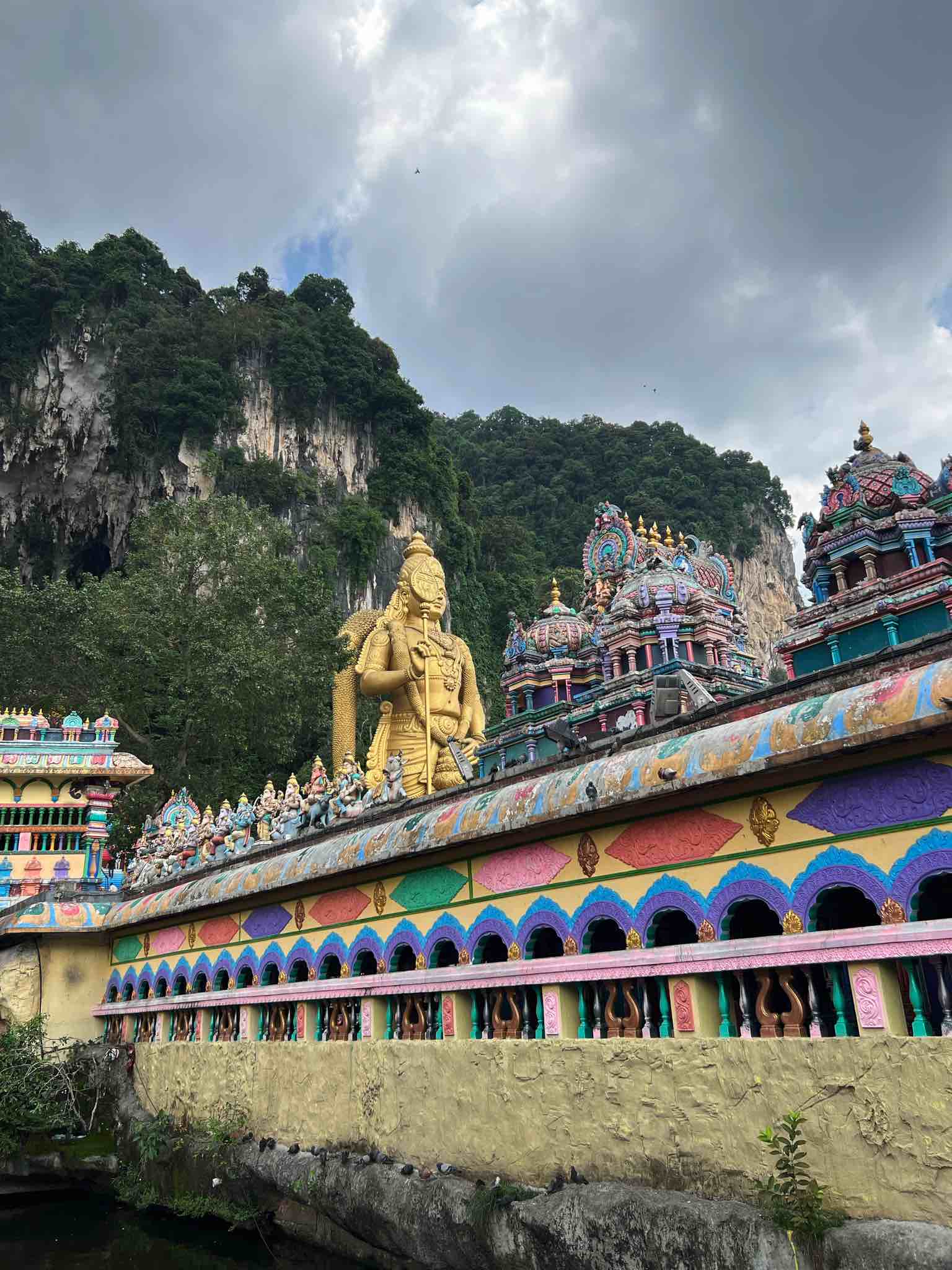
Batu Caves: The Sacred Wonders of Kuala Lumpur
Kuala Lumpur, the bustling capital of Malaysia, is known for its stunning skyline, diverse culture and mouth-watering cuisine. This bustling metropolis has a hidden gem that attracts visitors from all over the world - the awe-inspiring Batu Caves. Just 13 kilometers north of the city center, these ancient limestone caves have become an important religious and cultural site as well as a popular tourist destination.
We will go to Batu Caves by the KTM Komuter city commuter train. There are several reasons.
The first is accessibility from multiple locations. If you have a hotel close to any station, whether it's a subway, light rail or Monorail, you can get to KL Sentral anywhere, and from some stations you can take a train that leaves from KL Sentral. Quick, convenient and by the way you will avoid the cost of parking in Batu Caves and possible getting stuck in traffic jams on the way back.
Another reason why it is worth taking the cable car is that the train station is directly opposite the entrance to the cave complex. In fact, from the train station, you go straight to the entrance gate and see the beautiful limestone hills in which the caves are hidden.
The journey from KL Sentral station will take approximately 45 minutes. There is a departure every hour. This is one of those commuter lines that was recently opened. This greatly shortens the travel time to Gombak and is cheap. A one-way ticket costs PLN 3.
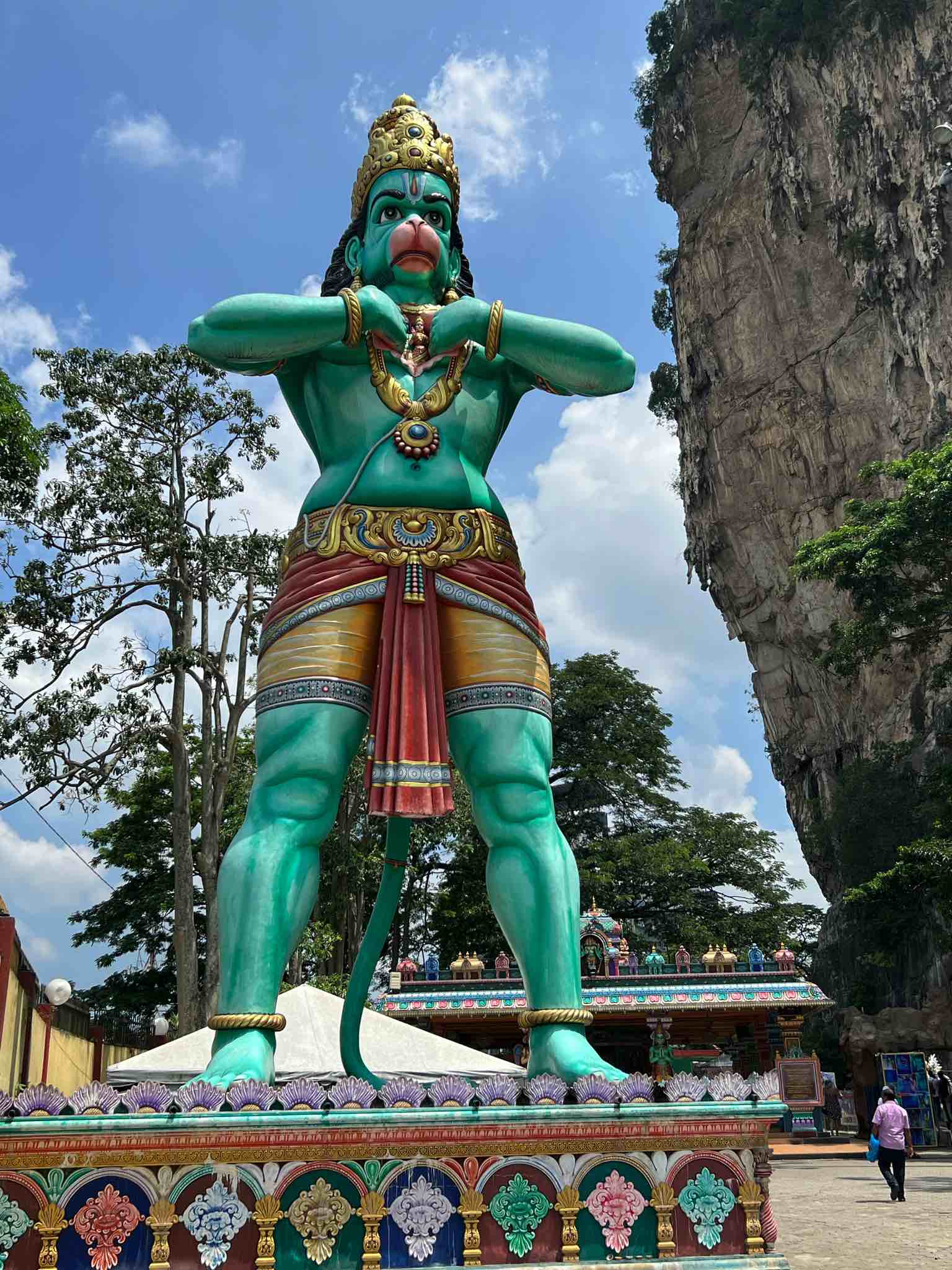
Caves, stairs and limestone
Batu Caves are one of the most important and impressive Hindu sanctuaries outside of India. This mystical place is distinguished by both its spirituality and its natural beauty.
The Batu Cave complex consists of a series of caves and cave temples, with the most significant and largest cave known as Cathedral Cave or Temple Cave. This massive cave is at an impressive height of 100 meters and is accessible by climbing 272 steps. As you climb the stairs, you are greeted by the 42.7-meter tall golden statue of Lord Murugan, the Hindu deity of war and victory. This breathtaking statue holds the Guinness World Record for being the tallest statue of Lord Murugan in the world among 10 existing statues.
The history of the Batu Caves dates back more than 400 million years, when limestone hills were formed. However, it was not until 1890 that the caves gained religious significance, when the Indian merchant K. Thamboosamy Pillai founded a temple dedicated to Lord Murugan. Today, the Batu Caves are an important religious site for the Hindu community, especially during the annual Thaipusam festival, when processions and religious ceremonies take place. During this festival, the faithful carry colossal wooden structures that are containers containing milk, decorated with beautiful motifs, on their bodies and proceed to make offerings. Both devotees and visitors come to the caves to pay their respects, ask for blessings, and fulfill their vows.
Noteworthy is the specific use of the stairs when bringing gifts to the Temple Cave. Pilgrims carrying gifts enter the two middle, wider passages, while visitors, observers or tourists use the side passages.
Batu Caves is not only a religious place, but also a tourist attraction. Every year it attracts hundreds of thousands of visitors, both pilgrims and tourists.
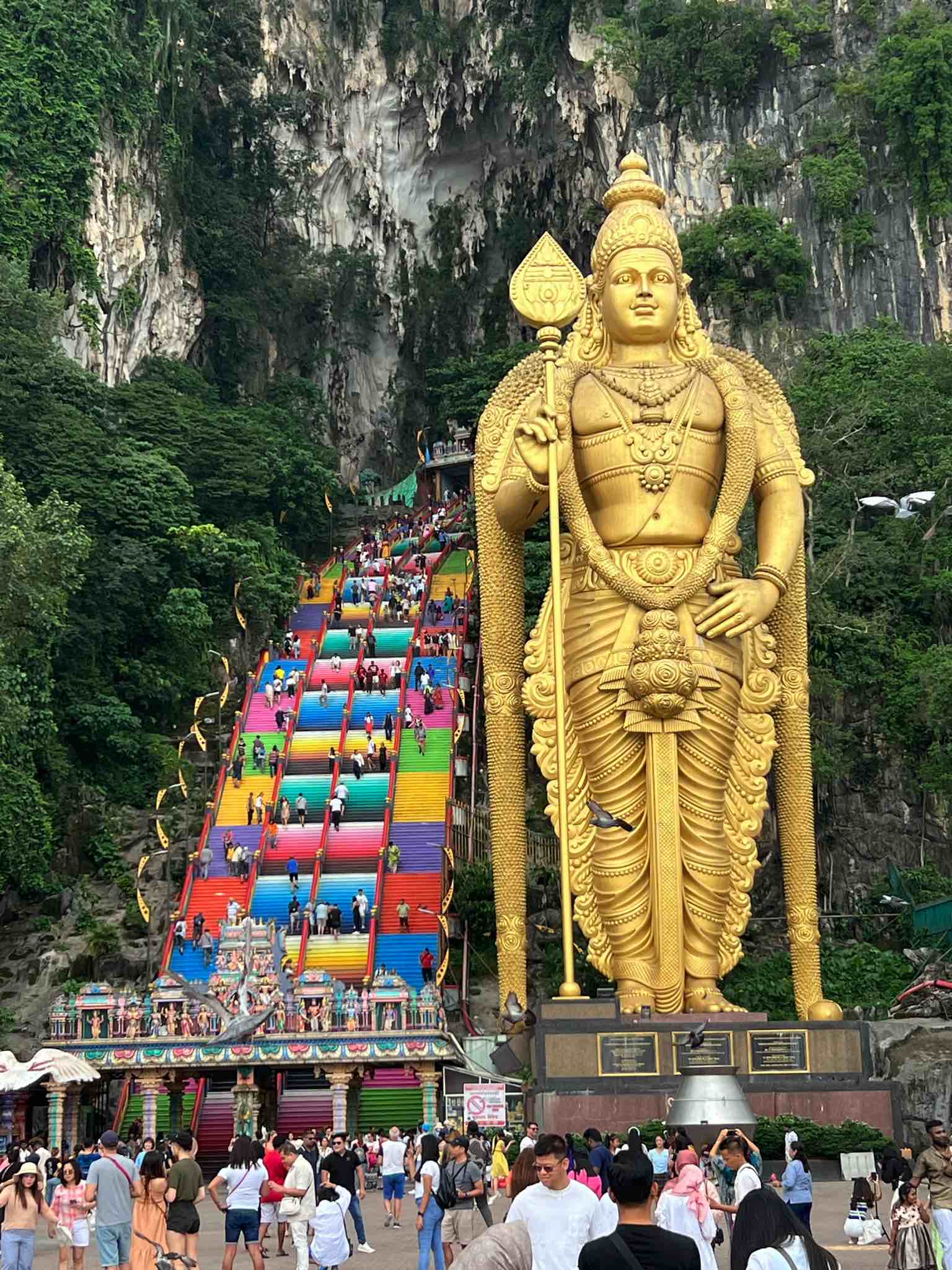
The view from below is just stunning. The monumental limestone rocks rising above the surrounding area blend into the landscape, creating an extraordinary contrast. It was here in 1891 that these natural formations were discovered, which later became a Hindu sanctuary.
The main cave, known as the Murugan Temple, is dedicated to the deity Muruga, son of Shiva. The entrance door, 42 meters high, decorated with colorful paintings depicting Hindu legends, leads to the interior of the cave. The temple is illuminated by natural light that penetrates through large holes in the rock. In its depths is the main altar with sculptures of Hindu deities, surrounded by burning candles and incense sticks.
Batu Caves also has other smaller caves, full of iconic figures and carvings. They are a popular place of pilgrimage for Hindu believers and are visited both during important religious festivals and in everyday worship. Also worth mentioning is the Dark Cave, which is part of the Batu Caves complex. There you can see a wealth of unspoilt nature, such as rare species of animals and plants. During my last visit, however, it was excluded from tourist traffic.
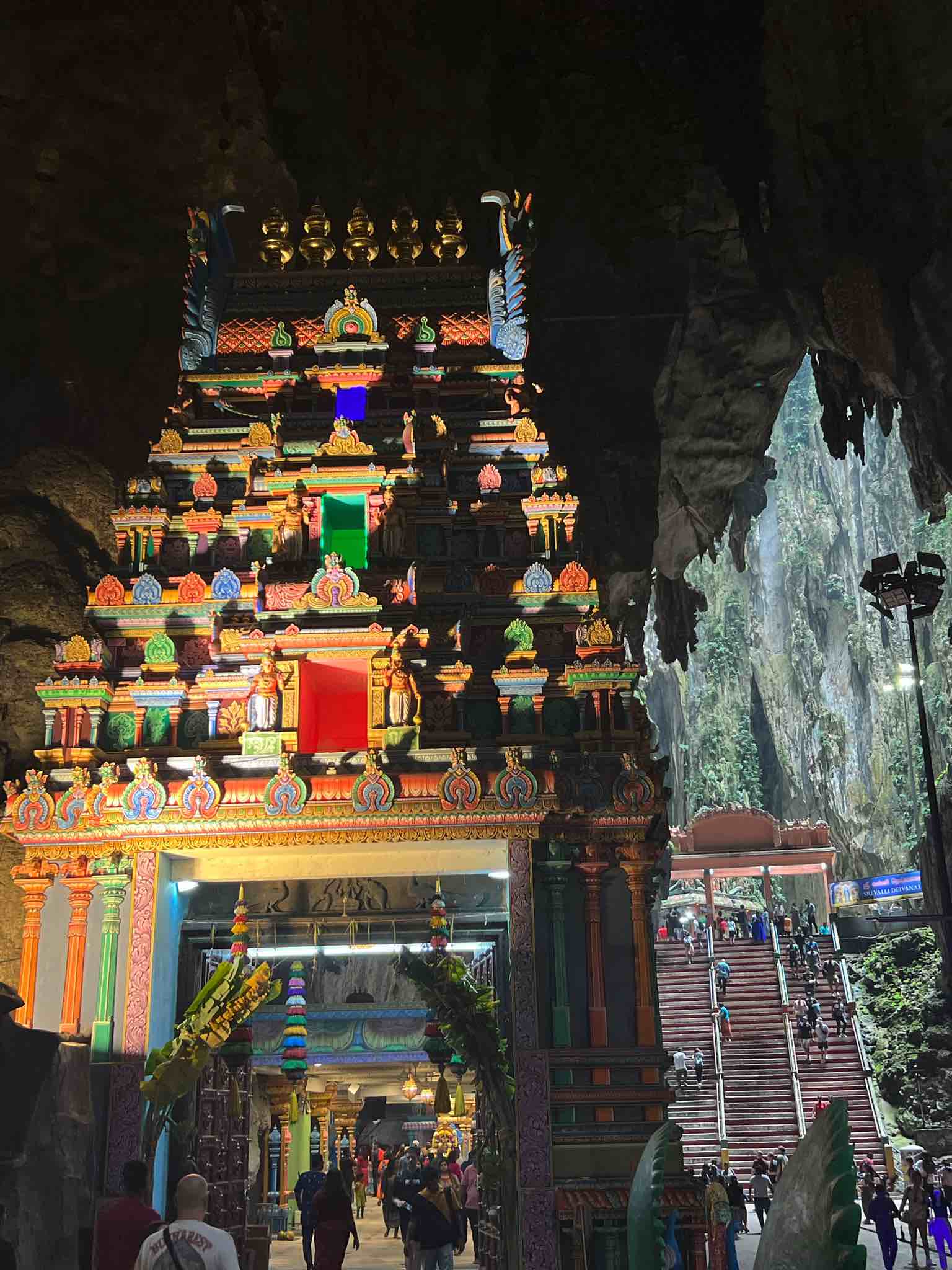
What do the Batu Caves look like?
The interior of the Cathedral Cave is a sight worth seeing. Natural sunlight streams through the opening at the top, illuminating the vast expanse and revealing the intricate details of the cave's formation. The high ceiling is decorated with stalactites, creating a surreal atmosphere. The air is filled with a sense of calm and spirituality, making it an ideal place for meditation and introspection.
As you explore the complex, you'll discover other smaller caves, such as the Art Gallery Cave and the Museum Cave. These caves contain various Hindu statues, paintings, and artifacts, giving visitors an insight into Hindu mythology and culture. The walls are decorated with colorful murals depicting scenes from ancient Hindu scriptures, adding to the lively atmosphere of the caves. This part is located at the foot of the hill and is easily accessible to people who find it too difficult to climb 272 steps.
In addition to its religious significance, Batu Caves also offers a unique experience for nature lovers. The limestone hills surrounding the caves are home to a rich ecosystem with numerous species of flora and fauna. Watch out for the macaque monkeys that roam freely around the area. While they can be mischievous, they are an integral part of the Batu Caves experience.
After reaching the place, it is best to immediately go to the caves on the mountain.
Being still full of energy, we will be able to climb steep stairs. To be honest, it's quite a demanding job.
First of all, there are, as you already know, 272 stairs. Unfortunately, they are built without the standards. They are narrow, uneven, sometimes you can't put your whole foot on, so you have to tread lightly sideways. This makes the climb itself demanding.

The second challenge is the aforementioned Macaques. Monkeys are abundantly represented in the area and on the stairs. In short, they steal everything they can. Whether it be food or some bags carried in the hand, all these things are of interest to them and unfortunately, it is very easy to lose them. If you can, avoid carrying anything with you because Macaques will want to take it all away from you.
In addition, if you travel to Batu Cave with children, you also need to be careful because monkeys can simply cut children. In fact, if you keep your distance, nothing should happen. Sometimes, however, they can jump on the head or shoulders for fun. They do have claws though, and you never know what those claws have touched before, so the risk of infection is there.
It's good to know that macaques are territorial animals, so you can't get close to them. This will avoid the attack.
Please also remember that this is, after all, a place of religious worship, so long pants and clothes that cover the arms up to the elbows are recommended. For the forgetful, you can rent a small Sari on the spot, which you can wrap yourself in.
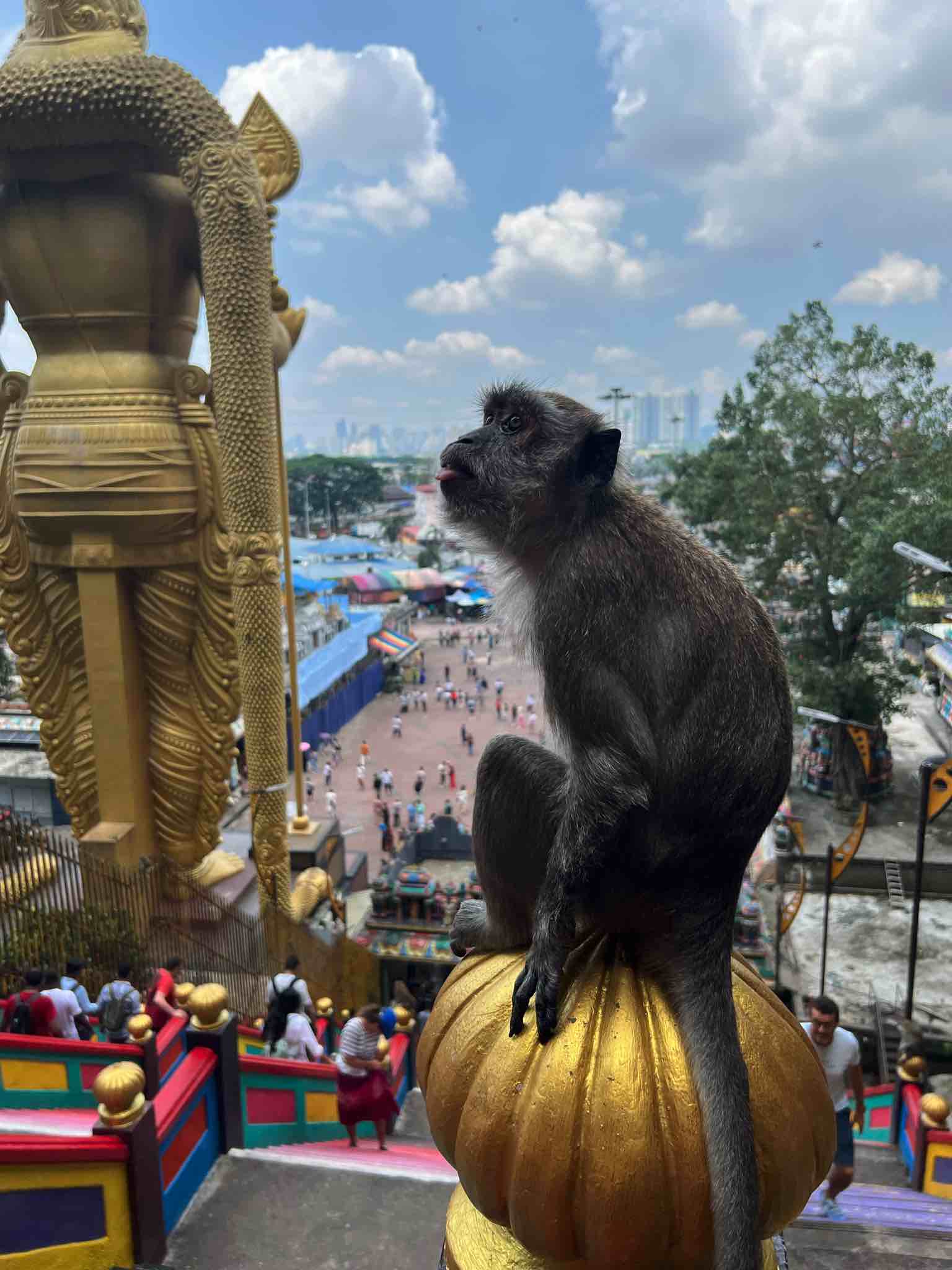
Rainbow stairs?
Over the years, the Batu Caves have undergone significant improvements to accommodate the growing number of visitors. Amenities such as shops, restaurants and rest areas have been added to improve the overall visitor experience. However, conservation efforts have been carefully balanced to preserve the natural and historic aspects of the site. There was, however, a small conflict between the monument restorer and the priests. It was about the stairs and basically their renovation. No one agreed on the colors of these stairs with the authorities. There were long discussions about whether to repaint the whole thing or agree to the colors of the rainbow. In the end, pragmatic Hindus convinced the officials and today we can admire the rainbow stairs leading to the caves.
A walk through the caves on the hill takes about an hour. Now the next challenge will be to go down quite steep stairs. Be careful because you can get hurt pretty bad if you lose your balance.
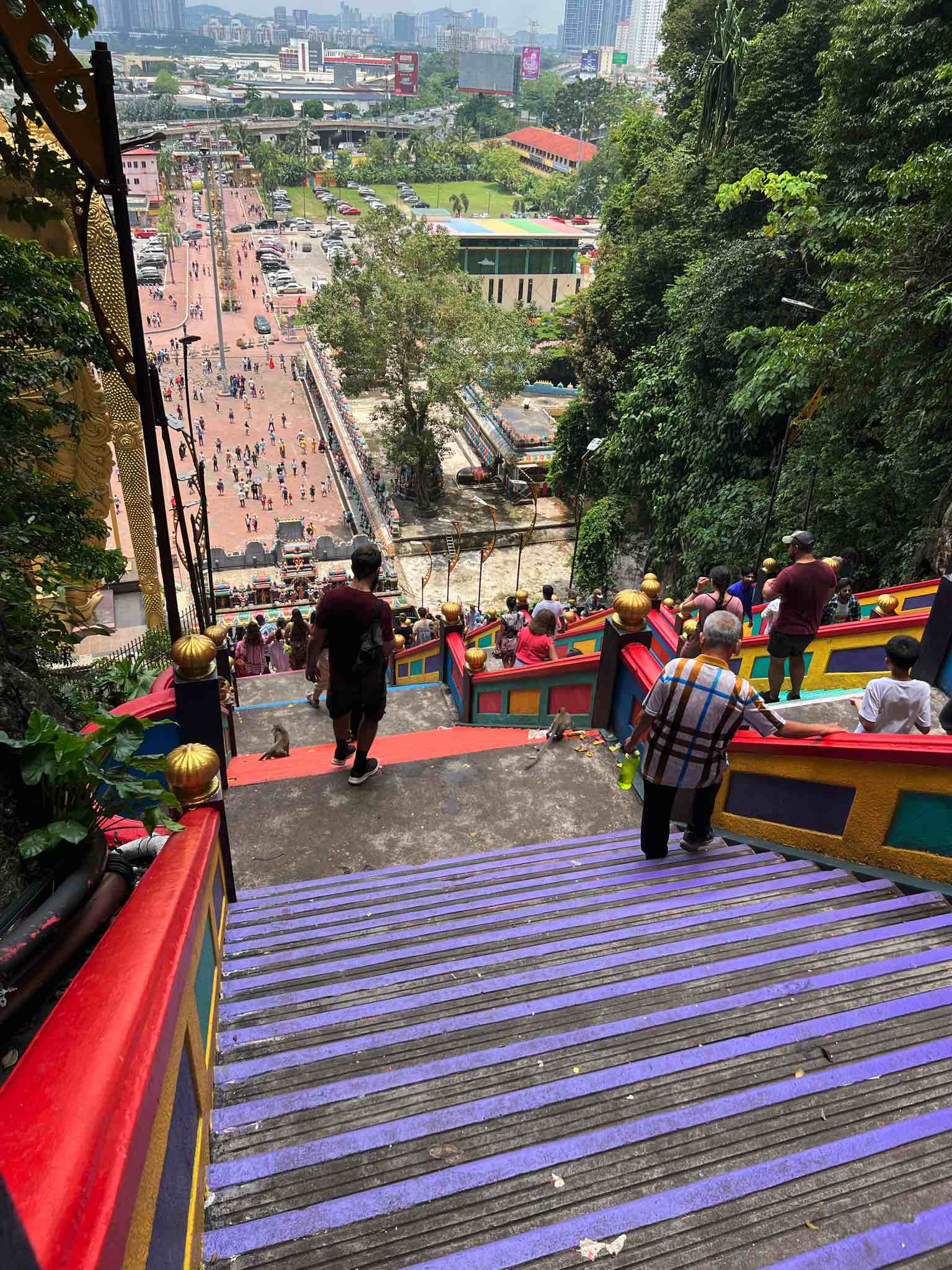
Historically, the entire complex was handed over to the faithful in 1892. Since then, all temple altars have been built one by one, and equipment has been brought in. And all this on wooden, steep stairs, more like a ladder, added in 1920 ...
Already in 1930 they had to be constantly repaired and when they became dangerous, the decision was made to build concrete stairs. The construction was completed in 1940.
After going down, on the right side, there are small caves with a museum exhibition and beautiful, richly decorated interiors. It's worth watching.
If you feel hungry after a few hours trip, there are many restaurants serving Indian food near the entrance. There is an opportunity to try.
A mystical place, a reason to be proud...
The presence of Batu Caves in Kuala Lumpur is a source of pride for the Malaysian Hindu community, and for tourists visiting Kuala Lumpur, it is an unforgettable experience. This is a chance to discover the rich culture and spiritual tradition of Hinduism and to see one of the most beautiful natural spots in Malaysia. This place attracts diverse groups of people who want to admire unusual rock formations, immerse themselves in a spiritual atmosphere and experience unforgettable moments.
Batu Caves is a place that combines faith, history, nature and fascinating landscapes.
Whether you are a spiritual seeker, history buff or just a curious traveler, Batu Caves offers a captivating journey into Malaysia's cultural tapestry. The combination of natural beauty, spirituality and architectural grandeur makes it a must-visit place in Kuala Lumpur.
So don't miss the opportunity to climb these 272 steps, immerse yourself in the mystical atmosphere of the caves and admire the wonders that await you in the Batu Caves.
Terima kasih! Sama-sama!
More articles


Pages created with WebWave


















